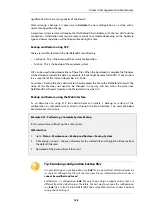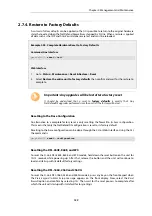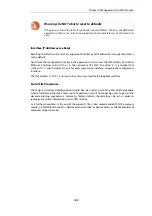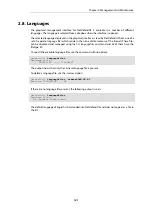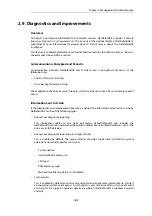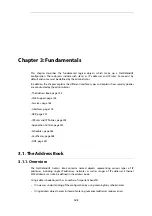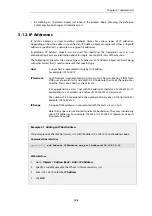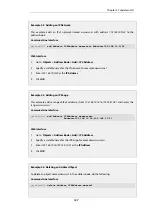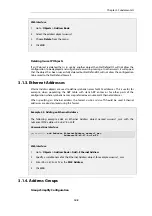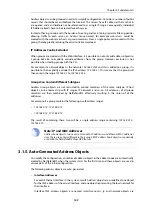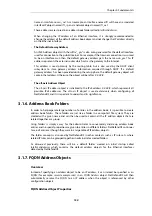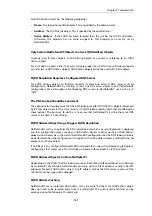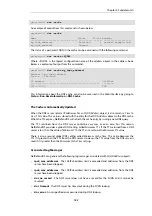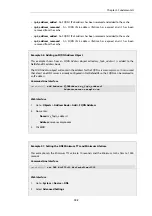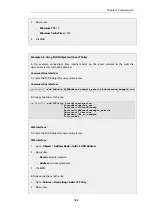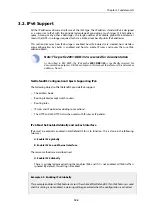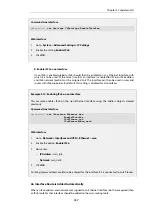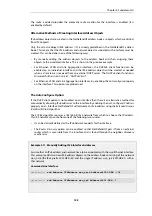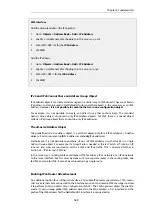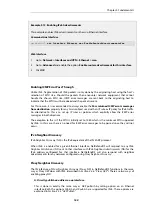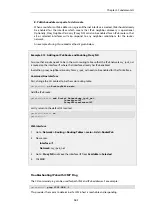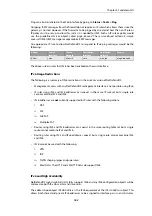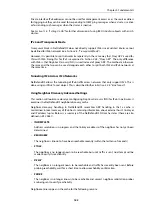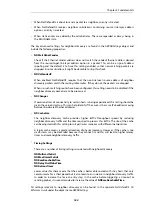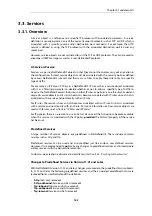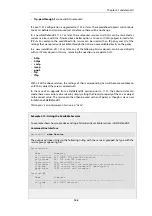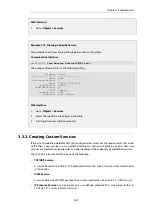
gw-world:/> dns -cache
An example of output from this command is shown below:
gw-world:/> dns -cache
Name
Status
IP Cnt Address
---------------------------------- ---------- ------ --------------------
my_fqdn_address1
Resolved
1
server1.example.com
my_fqdn_address2
Unused
0
The status of a particular FQDN in the cache can be examined with the following command:
gw-world:/> dns -cache <FQDN>
Where <FQDN> is the logical configuration name of the address object in the address book.
Below is a example of output from this command:
gw-world:/> dns -cache my_fqdn_address1
Address : my_fqdn_address1
Status
: Resolved
IP address
LifeTime
--------------------------------------------------
--------
203.0.113.3
299
This information about the DNS cache can also be accessed in the Web Interface by going to
Status > Run-time Information > DNS Cache.
The Cache is Automatically Updated
When the DNS server returns IP addresses for an
FQDN Address
object, it also returns a
Time To
Live
(TTL) value. This value is stored with the entry for the
FQDN Address
object in the DNS cache.
When the TTL expires, NetDefendOS will refresh the cache entry by issuing a new DNS query.
The TTL returned from the DNS server could be very low or even zero. For this reason,
NetDefendOS provides a global DNS setting called
Minimum TTL
. If the TTL returned from a DNS
server is less than the value of
Minimum TTL
, the TTL is reset to be the
Minimum TTL
value.
There is also a second global DNS setting called
Minimum Cache Time
. This value becomes the
TTL if it greater than the TTL from the DNS server. However, the TTL value from the DNS server is
used if it is greater than the
Minimum Cache Time
setting.
Associated Log Messages
NetDefendOS can generate the following log messages associated with
FQDN Address
objects:
•
ipv4_max_addresses - The 128 IPv4 address limit is exceeded and addresses from the DNS
server have been dropped.
•
ipv6_max_addresses - The 128 IPv6 address limit is exceeded and addresses from the DNS
server have been dropped.
•
dns_no_record - The DNS server does not have a record for the FQDN and it cannot be
resolved.
•
dns_timeout - The DNS server has timed out during the FQDN lookup.
•
dns_error - An unspecified error occurred during DNS lookup.
Chapter 3: Fundamentals
152
Summary of Contents for NetDefendOS
Page 30: ...Figure 1 3 Packet Flow Schematic Part III Chapter 1 NetDefendOS Overview 30 ...
Page 32: ...Chapter 1 NetDefendOS Overview 32 ...
Page 144: ...Chapter 2 Management and Maintenance 144 ...
Page 284: ...Chapter 3 Fundamentals 284 ...
Page 392: ...Chapter 4 Routing 392 ...
Page 419: ... Host 2001 DB8 1 MAC 00 90 12 13 14 15 5 Click OK Chapter 5 DHCP Services 419 ...
Page 420: ...Chapter 5 DHCP Services 420 ...
Page 573: ...Chapter 6 Security Mechanisms 573 ...
Page 607: ...Chapter 7 Address Translation 607 ...
Page 666: ...Chapter 8 User Authentication 666 ...
Page 775: ...Chapter 9 VPN 775 ...
Page 819: ...Chapter 10 Traffic Management 819 ...
Page 842: ...Chapter 11 High Availability 842 ...
Page 866: ...Default Enabled Chapter 13 Advanced Settings 866 ...
Page 879: ...Chapter 13 Advanced Settings 879 ...

